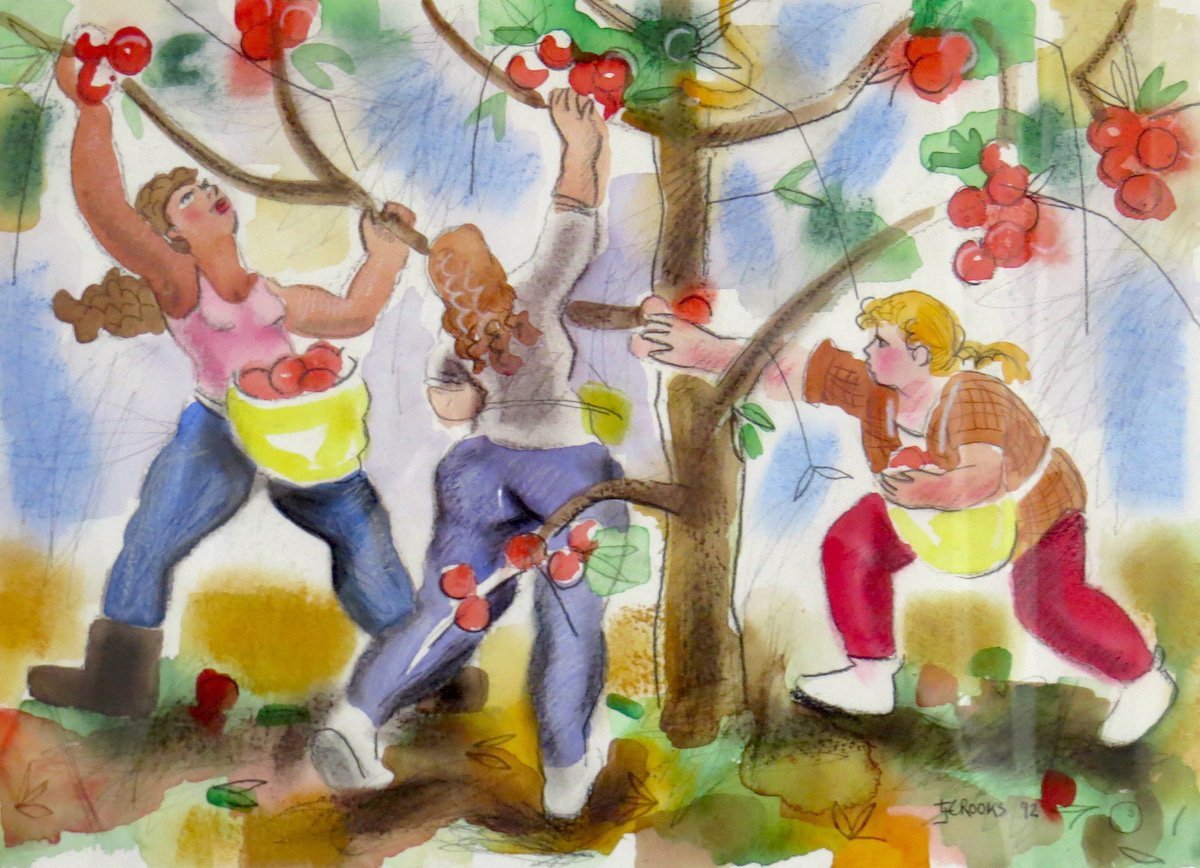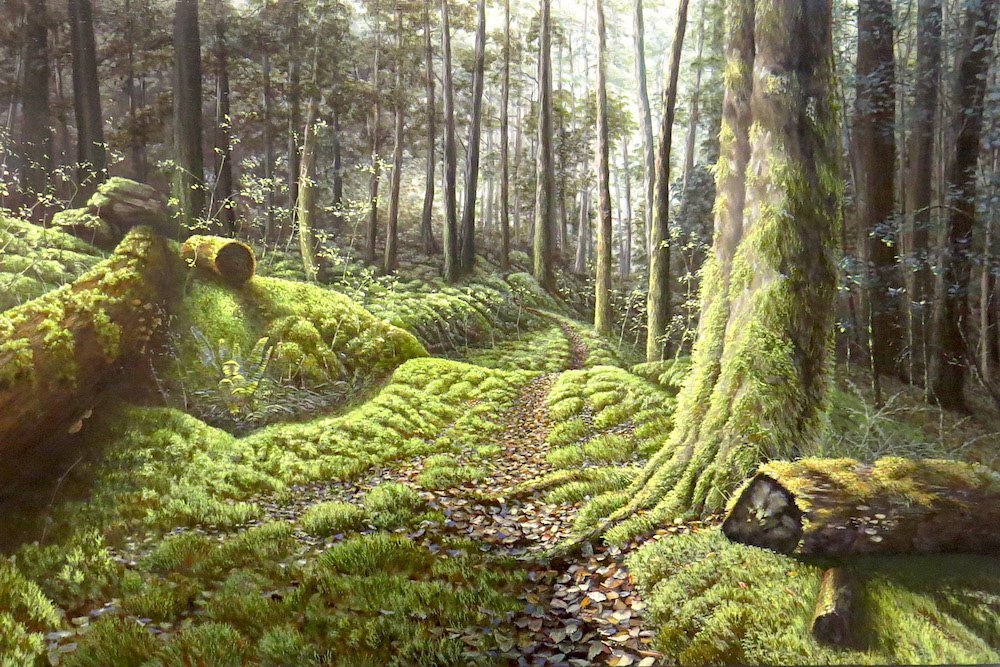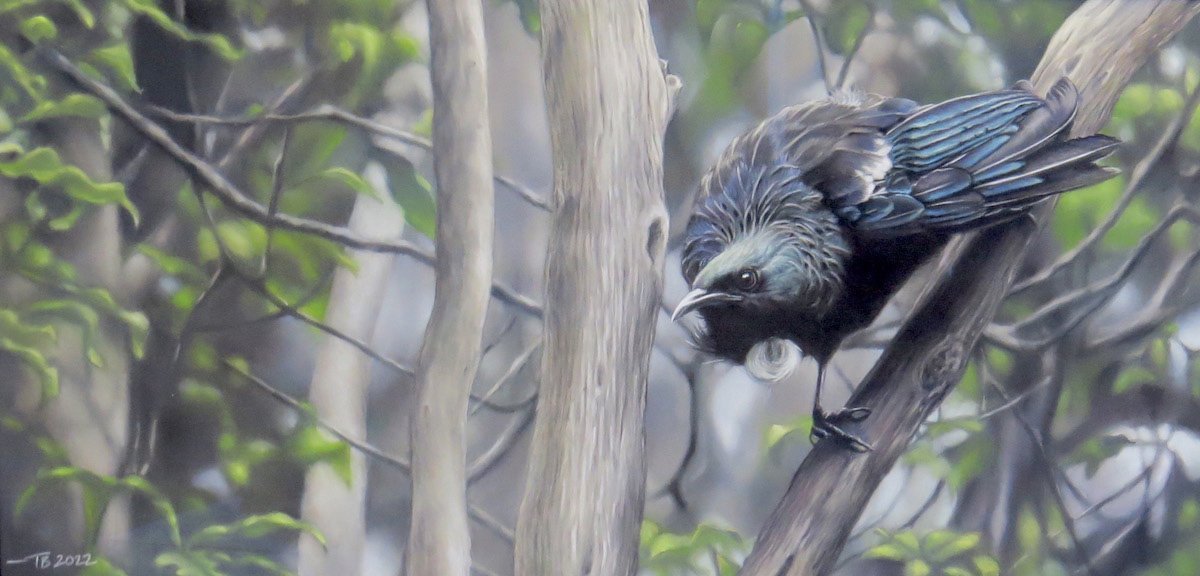"Figures", Lindsay Crooks - (Koru Gallery)

Lindsay Crooks’ works are a delight. The late artist was perhaps best known for his crowded, joyful beach scenes, in which the forms of the moving body are delineated in broad strokes and firm lines against a wash of background landscape.
In the current exhibition, beach images are rare, but his groups of figures are ever present. The compositional form of the works gives emphasis to the activities and dynamism of the characters depicted, especially in works like Untitled (The Tackle), a tribute to the national religion of rugby. Particularly interesting in this display are works presented in both sketch and completed form, such as the twin images of apple pickers, one dominated by graphite marks and thin washes of colour, and the other a riot of colour and shading.
Colour was a feature which Crooks used to great effect, often experimenting with the use of coloured paint on similarly toned paper (as in his nudes) or in the use of one strong hue to dominate a scene (as with the orange of Life Guard). Crooks’ images at times almost hearken back to a more traditional folk art — there is almost something of the Mexican mural about his Untitled (Horse), for example — but above all, he captures the profound and beautiful in the everyday.
"Duo", Sarah Freiburger - (Moray Gallery)

"Duo" is an appropriate name for Sarah Freiburger’s work at Moray Gallery. The display is effectively two exhibitions within one, one of watercolours, the other of acrylics.
The watercolours presented consist of four studies of the ears of grasses, all bathed in a honey-rich glow of golden light. There is a delicacy to the beauty of these images, presented as crystal-clear shafts caught against a hazy backdrop, as if the grasses have been trapped like insects in amber. The works evoke a heady redolence of summer, a season which is not unsurprisingly mentioned in several of the titles. If the watercolours’ beauty is fragile, with the acrylics that gentleness is replace by the grandeur of the forest. The rich warmth of the watercolours gives way to the cool greens and grey-browns found beneath the forest canopy. These four works depict dense but open tree-scapes, with walking tracks leading out of the frame and into the distance. The moss, branches and fallen leaves are all captured precisely, as is the haziness of the receding scenes, giving the works a feeling of great depth.
It would be hard to decide whether the solidity of the trees or the wispiness of the trembling grasses is the better work, as both are presented with aplomb.
"Sanctuary", Tessa Barringer - (The Artist’s Room)
 Territory IV by Tessa Barringer.
Territory IV by Tessa Barringer.

Tessa Barringer is well-known for her studies of birds, usually depicted in tableaux alongside antique tableware, and fruit in a style strongly reminiscent of traditional vanitas art. The subjects are placed together against a darkened and often subtly gradated background in remarkably photorealistic works created from an unforgiving medium, pastel.
In her latest exhibition, Barringer has included more excellent examples of this style, showing off the artist’s virtuosity at rendering texture and light. Images like the crystalware of Attitude display this skill well. But these works sit alongside several works in which the birds are now presented in a more naturalistic setting.
The artist has excellently rendered the photographic studies that she uses for her art — the photographic source is most notable in the hexagonal spots of soft focus in Territory II (Kaka) — but the real centrepiece in all of these works is the artist’s ability to capture the attitudes and expressions of her subjects. The kereru of Post-Colonial Kai II and camouflaged chicks of ... In Plain Sight (Wrybills) are a delight. The striking Territory IV, one of the star works in the show, expertly captures a tui’s entire personality in sharp relief, dominating a work that should also be noted for the cleverly depicted focal blur of background branches and leaves.











